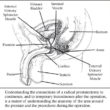Active surveillance as a management strategy

This original investigation aimed at characterizing the long-term outcomes of patients with low-risk prostate cancer (i.e., low-volume and low Gleason grade tumors) receiving active surveillance in a multicenter, protocol-directed cohort.
A cohort of over 200 men with favorable-risk prostate cancer and no prior treatment were enrolled at 10 North American centers. The median patient age was 63 years; 83% were White, 7% were Black. Ninety percent were diagnosed with Gleason grade group 1 cancer,(Gleason score of 3+3= 6 or less), and median blood prostate-specific antigen (PSA) level was 5.2 ng/ml.
In this study, with a follow-up period of 10 years after diagnosis, 49% remained free of cancer progression or treatment. Fewer than 2% developed metastases and fewer than 1% died of their disease. Worse outcomes were not associated with later progression and treatment during surveillance. These study results demonstrate that active surveillance is generally an effective management strategy for patients diagnosed with favorable risk prostate cancer, at least for a period of 10 years. Longer follow-up will be needed because favorable-risk prostate cancer usually progresses slowly.
JAMA Network Open. Published online May 30, 2024. doi:10.1001/jama.2024.6695





















